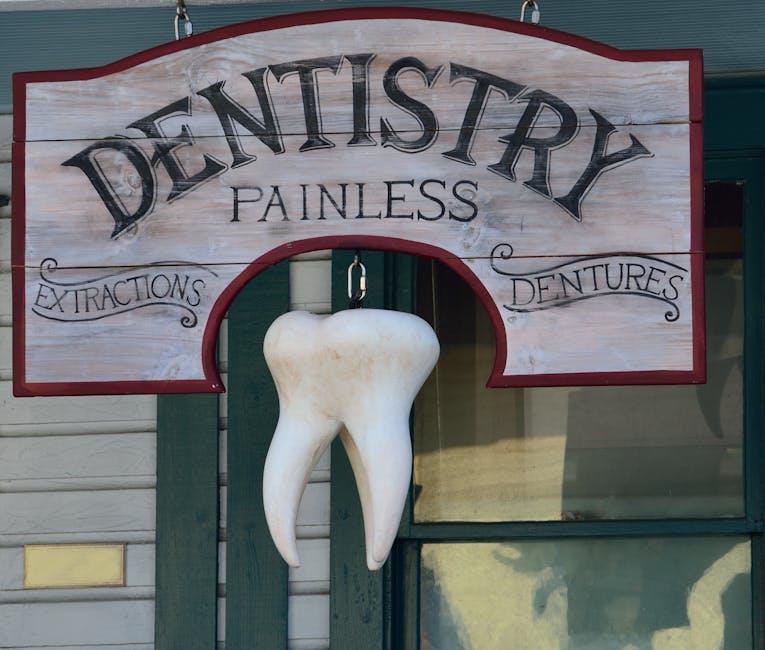
Three Ways to Make Dental Care Kinder for Anxious Patients
Visiting the dentist can be a nerve-wracking experience for many people. Dental anxiety affects millions worldwide, often leading to postponed treatments and worsening oral health. Fortunately, dental professionals and clinics can adopt kinder, more empathetic approaches to ease patient fears and create a positive dental care experience. In this article, we explore three practical and proven ways to make dental care kinder for anxious patients, helping both patients and dental teams build trust and comfort throughout treatments.
Understanding Dental Anxiety and Why Kindness Matters
Before diving into the techniques, it’s important to understand the scope of dental anxiety. Often stemming from past traumatic experiences, fear of pain, or loss of control, dental anxiety can affect up to 36% of the population globally. Patients with anxiety are more likely to avoid dental visits, which can result in untreated problems and worsen their overall oral health.
By adopting kinder strategies tailored to anxious patients, dental professionals can:
- Reduce fear and improve patient cooperation.
- Encourage regular dental visits and preventive care.
- Strengthen the dentist-patient relationship based on empathy and trust.
1. Creating a Calm Environment to Ease Anxiety
The physical atmosphere of a dental clinic hugely influences patient comfort. A calming, friendly environment can work wonders in reducing anxiety before and during treatments. Here are some ways to achieve this:
- Soothing Colors and Lighting: Use soft colors like blues, greens, or earth tones, and avoid harsh fluorescent lights that may heighten stress.
- Noise Reduction: Background music or white noise machines can help mask the sounds of dental drills or other equipment.
- Comfortable Seating: Ergonomic and cushioned waiting and treatment room chairs make patients feel physically relaxed.
- Welcoming Décor: Adding plants, artwork, or even a fish tank creates a distraction and a more inviting atmosphere.
Example: Calming Environmental Factors for Anxious Patients
| Environmental Factor | Benefit |
|---|---|
| Soft Ambient Lighting | Reduces sensory overload and helps relax patients |
| Gentle Background Music | Drowns out frightening dental noises |
| Comfortable Furniture | Physical comfort eases tension and promotes calm |
| Nature-Inspired Décor | Creates a peaceful, inviting atmosphere |
2. Effective Communication and Patient Empowerment
One of the most overlooked strategies for kinder dental care is how dentists and staff communicate with anxious patients. Open, empathetic communication can transform fear into reassurance. Key communication practices include:
- Active Listening: Allow patients to express fears without judgment and acknowledge their feelings.
- Clear Explanations: Use simple words and visual aids to explain procedures, reducing uncertainty and surprise.
- Collaborative Treatment Planning: Involve patients in decision-making, letting them choose options when possible.
- Positive Reinforcement: Praise small achievements like sitting through an appointment to build confidence.
- Use of Hand Signals: Agree upon hand signals for patients to pause or communicate discomfort during treatment.
This approach empowers patients, giving them a sense of control and dignity throughout their dental care journey.
Tips for Communication with Anxious Dental Patients
- Start appointments with brief casual conversation to build rapport.
- Avoid rushing—take time to answer all patient questions thoroughly.
- Repeat key information to confirm patient understanding.
- Maintain a calm tone and soothing body language.
3. Incorporating Relaxation and Distraction Techniques
Relaxation and distraction methods can significantly reduce perceived pain and anxiety during dental visits. Here are three effective ways to integrate these techniques:
- Guided Breathing Exercises: Encourage deep, slow breathing to induce relaxation before and during procedures.
- Music or Audiobooks: Provide headphones so patients can listen to their favorite music or stories, diverting attention away from dental work.
- Use of Virtual Reality (VR): Cutting-edge VR headsets offer immersive distraction experiences proven to lower pain perception and anxiety in some patients.
Additionally, nitrous oxide (“laughing gas”) and mild sedation options are available for more severe anxiety cases, always administered by qualified professionals.
Relaxation Techniques and Their Benefits
| Technique | Benefit |
|---|---|
| Guided Breathing | Calms nervous system and reduces heart rate |
| Music/Audiobooks | Distracts from unpleasant sensations and noise |
| Virtual Reality | Immersive distraction reduces pain and anxiety |
| Mild Sedation | Provides relaxation for severe dental fears |
Benefits and Practical Tips for Dental Clinics
Integrating these three approaches results in numerous benefits not only for patients but also for dental professionals and clinics:
- Improved patient retention and loyalty
- Faster appointments due to decreased patient movement or resistance
- Greater job satisfaction for dental teams from positive patient experiences
- Better oral health outcomes and fewer emergency visits
Practical tips for dental teams:
- Train all staff members in anxiety-awareness and kindness techniques.
- Conduct pre-appointment phone calls to assess anxiety and prepare patients.
- Create patient intake forms that identify dental fear levels and triggers.
- Regularly seek patient feedback to refine kindness practices.
Case Study: A Dental Practice Embraces Kindness
At SmileEase Dental Clinic, the introduction of a kinder patient care model led to a 40% reduction in appointment cancellations within one year. The clinic implemented calming waiting areas, mandatory staff training on anxiety communication, and offered free guided breathing sessions before treatments. Many patients reported feeling “heard” and “safe” for the first time in a dentist’s chair. Such results highlight how simple kindness-centered strategies can transform dental care experiences.
Conclusion
Dental anxiety is a widespread barrier to oral health, but kindness can be a powerful remedy. By creating calm environments, fostering effective communication, and using relaxation techniques, dental professionals can make visits less intimidating and more positive. These three ways to make dental care kinder — combined with ongoing empathy and patient involvement — not only improve patient comfort but promote healthier smiles in the long run.
If you or a loved one suffers from dental anxiety, remember that your feelings are valid, and kinder dental care is available. Don’t hesitate to discuss your concerns openly with your dental team — together, you can find the best path for comfortable, stress-free oral health care.


